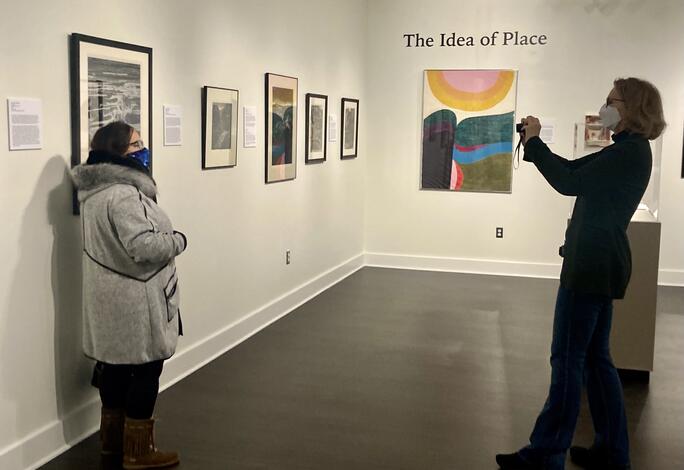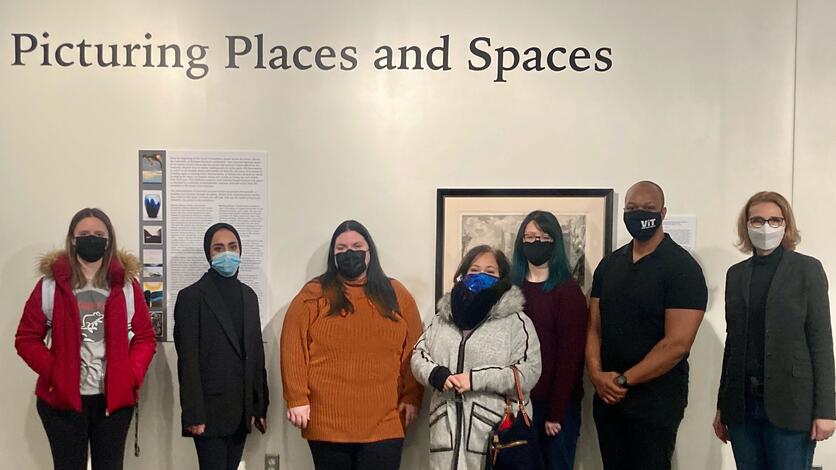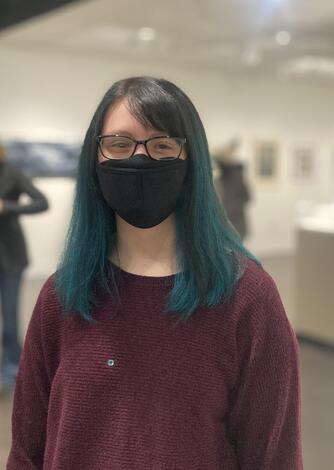
Artist Alfred Sisley captured light reflecting on the Loing River in his lithograph from 1896. Hiroshige, a Japanese ukiyo-e master, uses the color woodblock printing technique to feature a serene mountain snow scene. Giovanni Battista Piranesi etched images of antiquities that he studied in Rome.
These are works on display in the new Stamelos Gallery Center exhibition “Picturing Places and Spaces.” The 41 pieces on display — a variety of media that are international to local in scope — are all brought together in the 21st century to reflect on the respite the outdoors has offered during the pandemic.
The new exhibit at the Stamelos Gallery Center, located on the first floor of the Mardigian Library, is open to U-M community members now through April 1.
Art History major Brittanie Sharp said COVID’s onset made people intensely aware of the spaces of their homes and if there are nearby walking paths or public parks.“Something COVID did was help us notice the world around us more. That’s what stayed open and available. I went on a lot more hikes and walks and started to notice more things like the shape of treetops.”
The displayed works come from the Stamelos Gallery Center’s permanent collection and from the University of Michigan Museum of Art. Although the artists were from a variety of places — there’s art from Europe. Asia and North America — and pieces were created from different inspiration points, the works are brought together under themes of place that include Famous Places, City Spaces and Sites of Solitude.
As a part of Professor Susan Erickson’s Art History Capstone Seminar, Sharp and her classmates curated content and assisted with installation for “Picturing Places and Spaces.”
Art history students have helped create exhibits for decades — but this time students learned about museums, curation, and installation in a one semester practice-based learning capstone experience. The new capstone was created to help ensure students got a more complete picture of what it’s like to work in a museum.






